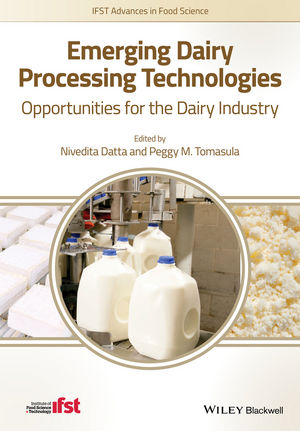Waste water treatment: dealing with the FOG of processing

When Darigold installed a cottage cheese production line at a plant in Boise, Idaho, it needed to add a wastewater treatment system. ADI Systems Inc. designed, supplied and installed a 1.7-million-gallon (6,400 cubic meters) reactor to operate in parallel with an existing reactor.

Beckart Environmental designed and installed a wastewater treatment system at Butter Buds Inc.

Beckart’s Hy-Pack filter press separates clean water from a dry filter cake for landfill disposal at Butter Buds’ processing plant in Racine, Wis.



Virtually all food processors experience the common challenge of managing wastewater from the production and maintenance aspects of their operations. Processors of dairy foods and flavorings typically have particular issues to address with regard to the constant presence of fats, oils and grease (FOG), as well as surfactants such as soaps and sanitizers from the wash-down phases of their housekeeping practices. Together, these items can cause significant variations in the pH of effluents from day to day.
For these reasons, not to mention the increasingly restrictive discharge standards in many areas, escalating costs of surcharges imposed by publicly operated treatment works (POTWs) and simply a desire among many food processors to have better control over their fresh water use, many firms that generate wastewater are turning to in-house pre-treatment systems that offer a more streamlined path to cost-effective environmental compliance.
Food processors experiencing rapid growth sometimes find themselves approaching a point where they simply overwhelm the ability of the local treatment facilities to effectively handle the effluent. This was the case with Butter Buds Inc., a Racine, Wis.-based processor of dairy products such as butter, cheeses and related flavorings. Until the company’s inception as a processor in 1999 (it started in 1979 as a sales organization), the firm had little or no wastewater issue.
Then Butter Buds elected to begin its own manufacturing and built a 30,000-square-foot facility. For several years, a traditional pump-out grease trap system adequately handled the FOG, even as the facility expanded to about 52,000 square feet in 2001. But by 2009, business growth dictated yet another expansion and Butter Buds purchased an adjacent 80,000-square-foot building for warehousing and a prospective wastewater pre-treatment installation.
Beckart Environmental Inc., Kenosha, Wis., was selected as the primary designer and manufacturer of the treatment system, which was completed in late 2013. According to Butter Buds’ Technical Manager John Kueffer, the dairy processor spent several months not only evaluating potential system suppliers, but also developing a timeline that would assure the most effective and efficient integration with its plant expansion and anticipated future requirements.
“Beckart had a lot of experience with both the food processing industry and designing for growth, so we were presented with worthwhile suggestions all through the process,” Kueffer said. “This was not only a wastewater treatment system installation, but a fairly significant infrastructure investment. For instance, one of our first projects was to excavate, install below-ground plumbing and electrical upgrades, and resurface the old parking lot between the two buildings. It was all completed accounting for a manufacturing layout that features about 80-90% wet process and the balance dry process, as well as our current single-shift, 5 day/week production and sampling schedule.”
Beckart officials say that when they engineer systems for the food processing industry, they ordinarily anticipate that they’ll not only need to target FOG and the like, but also surfactants, caustics, acids and sanitizers contained in soap and other cleaners. For this reason, Beckart offers not only commodity chemicals that are widely available, but also proprietary blends for a variety of industries.
At Butter Buds, a single daily batch can now be processed through the new wastewater treatment system, which is automated in large part from start to finish. Incoming wastewater starts out in an 11,000-gallon holding tank. A programmable logic controller (PLC), engineered in Beckart’s controls lab, initiates the treatment process and makes all chemical and operational decisions based on data received from sensors placed throughout the system. The PLC can also be monitored or adjusted through links to Kueffer and other Butter Buds personnel, as well as by modem to Beckart technical support, if necessary. A touch-pad PanelView display enables operator adjustments and provides treatment logs and other vital information. Manual tasks include routine housekeeping and human observation in an adjacent lab and sampling area.
Typically, upon start-up, a mixer in the holding tank is engaged intermittently to promote equalization and maintain consistency of the batch to be treated. The wastewater is then transferred to a 5,500-gallon treatment tank with the addition of polymers, coagulants and pH-adjusted chemicals. The physical-chemical process causes clearer water to fill the lower area of the treatment tank and proceed in stages to Beckart’s Hy-Pack recessed-plate filter press, until finally only sludge is remaining. A cone-bottom configuration to the treatment tank assures thorough emptying en route to the filter press, where the sludge is finally dewatered and compacted before the press is opened and the dry sludge cake falls to a sludge cart for landfill disposal.
Clear filtrate water is then suitable for safe sewer discharge without the imposition of surcharges. In this case, in terms of cost savings, the real impact has been the elimination of surcharges from the city for removal of fats and oils. FOG effluent levels have gone from as high as 2,000 ppm to approximately 20 ppm. The pH factor was an important consideration as well. The city’s proscribed levels are 5-10 on the pH scale; Butter Buds is now at approximately 7 consistently, with the ability to easily adjust as variations occur in production volumes and composition.
The big advantage of the new treatment system is the firm has exceptional control over how it manages all processes in-house, Kueffer said. Compliance risks have been minimized, surcharge costs have been contained and Butter Buds has fulfilled its mission as an environmentally proactive and responsible neighbor.
“Our company has a number of unique production processes,” he said. “The market and the industry know us for our quality, and we tried to go the extra mile with the wastewater treatment system. Now that it’s had a few months to prove itself, I can say we’re very satisfied.”
Darigold upgrades its system
At its dairy processing plant in Boise, Idaho, the farmer-owned dairy cooperative Darigold was preparing to install a cottage cheese production line that would increase wastewater flow as well as change the organic load.
ADI Systems Inc., Fredericton, New Brunswick, designed, supplied and installed a 1.7-million-gallon (6,400 cubic meters) ADI-BVF reactor to operate in parallel with Darigold’s existing reactor (which ADI Systems had installed nearly 15 years ago). This new project included tank internals, a recycle pumping system, a geo-membrane tank cover for odor control and interconnecting piping to the existing BVF reactor and activated sludge system.
Additionally, ADI Systems upgraded the biogas transmission system, aeration system and control programming in order to accommodate the increases in hydraulic and organic load sent to the treatment system.
Darigold’s newly expanded treatment system was designed to treat wastewater with a flow of 217,000 gallons per day (about 820,000 liters) and chemical oxygen demand (COD), biochemical oxygen demand (BOD) and total suspended solids (TSS) concentrations of 13,000 milligrams per liter, 8,000 mg/l and 1,000 mg/l, respectively.
The treatment system produces no foul odors, which is important because the plant is located in a well-developed area in Boise. The long retention time associated with the BVF reactors ensures that fat, oil and grease in the raw wastewater and waste-activated sludge from the downstream aerobic polishing system are properly digested. This reduces the need for waste sludge handling and disposal.
The two BVF reactors meet the design objectives of 90% COD and BOD removals. The combination of BVF and activated sludge technologies produces a high-quality effluent with average final effluent BOD and TSS concentrations of 70 mg/l and 100 mg/l, respectively.
The upgraded wastewater treatment plant continues to provide Darigold with a robust, resilient treatment system that requires little energy to operate, thereby minimizing overall operating costs.
Beckart Environmental Inc. contributed the Butter Buds case study and ADI Systems Inc. contributed the Darigold case study.
Biogas systems offer revenue streams to dairy farms
A Biogas Opportunities Roadmap issued by the White House highlights the economic and environmental benefits and potential for biogas systems on dairy farms in the United States. The systems work by recycling organic material — including cow manure and food waste — into co-products such as renewable energy, fertilizer, separated nutrients and cow bedding.
To develop the Roadmap, The White House worked with the U.S. Department of Agriculture, Department of Energy, the Environmental Protection Agency and the dairy industry through the Innovation Center for U.S. Dairy.
“The Biogas Opportunities Roadmap will help stimulate the emerging biogas market in ways that could provide revenue-generating opportunities for dairy farms of all sizes,” said Jim Mulhern, president and chief executive officer of the National Milk Producers Federation, which develops and carries out policies that advance the well-being of dairy farmers and the cooperatives they own.
The USDA, DOE and EPA will take these steps to promote the development of biogas systems:
- Fostering investment in biogas systems. To help overcome barriers to the widespread investment in biogas systems, USDA will lead efforts to better understand and track the performance of anaerobic digesters, seek opportunities to broaden financing options and review Federal procurement guidelines.
- Strengthening markets for biogas systems and system products. The Roadmap identifies activities that could strengthen the market for biogas systems and system products including energy and other value-added products. For example, dairy farms of all sizes could enhance their revenues through nitrogen and phosphorus recovery.
- Improving communication and coordination. USDA will establish a Biogas Opportunities Roadmap Working Group including the dairy industry to implement the strategies in the Roadmap, with a goal to identify and prioritize policies and technology opportunities by August 2015.
- Promoting biogas use through existing agency programs. Leveraging existing programs will provide a way to enhance the use of biogas systems in the U.S. by ensuring existing criteria for technical and financial assistance considers the benefits of biogas system, leveraging research funding and strengthening programs that support the use of biogas for clean energy, transportation fuel and other bio-based products.
Biogas systems could help the dairy industry, which contributes approximately 2% of total U.S. greenhouse gas emissions, to further reduce its carbon footprint. In 2009, the dairy industry established a voluntary goal to reduce its carbon footprint by 25% by 2020. The Dairy Power project is one of a portfolio of projects to help achieve that goal; it focuses on harnessing the value of manure and realizing the potential of biogas systems for U.S. dairy farmers.
Contributed by the Innovation Center for U.S. Dairy, which was established under the leadership of dairy farmers.
Looking for a reprint of this article?
From high-res PDFs to custom plaques, order your copy today!











